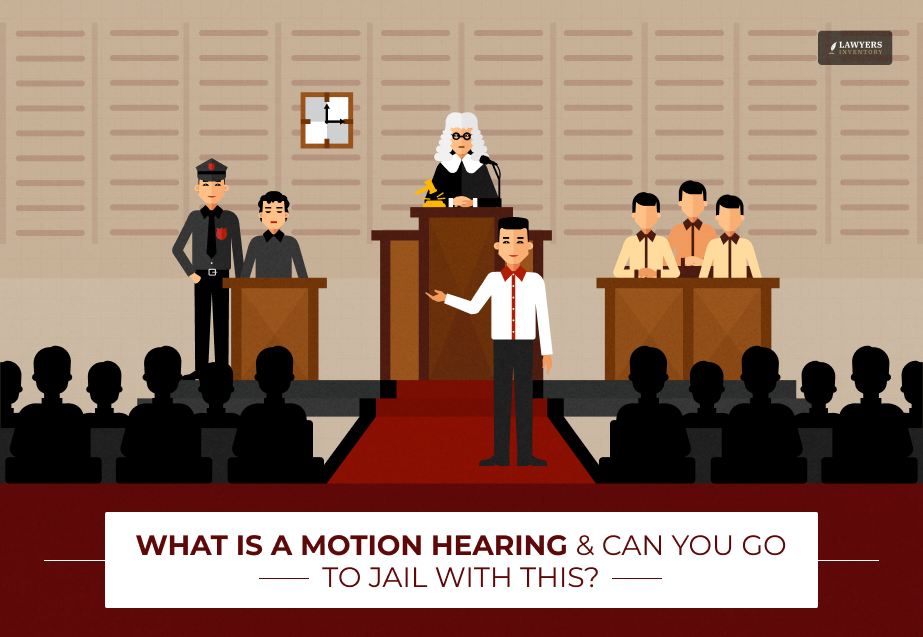
I am back with another blog where I plan to simplify complicated legalese and jargons. And today’s topic is all about understanding what is a motion hearing.
A motion hearing is one part of the legal process that happens before a trial. It may sound scary or confusing, but it’s not as complicated as it seems. This article will help you understand it in the easiest way possible—even if you’ve never been in a courtroom.
Sometimes, lawyers or people involved in a case ask the judge to make a decision before the trial starts. That’s where a motion hearing comes in.
You might wonder, “Can I go to jail because of it?” or “Can the case end right there?”
Hi. In today’s blog, I will be answering to all these questions. So, keep reading till the end and thank me later…
What is a Motion Hearing?

A motion hearing is a special meeting in court that happens before a trial. In this meeting, one side—either the person who is suing or the person being sued—asks the judge to decide something important.
This could be anything like stopping certain evidence from being used, asking to dismiss the case, or even changing where the trial takes place.
Think of it like this: Before a big game, the referee might meet with the teams to make sure everything is fair and clear.
That’s what a motion hearing is like, but for court. It’s not the actual trial. It’s just a chance to sort out some details or problems ahead of time.
The judge listens to both sides. Sometimes lawyers talk, show papers, or explain things. The judge then makes a decision on the issue.
This can make the case move faster or even stop the case if the judge sees a big problem. It’s a very important step in the legal process.
What are the Elements of a Motion Hearing?
A motion hearing usually includes:
- The motion: A written request asking the judge to decide on something.
- Arguments: Both sides explain why the judge should or shouldn’t agree.
- Evidence: Documents or facts that support each side.
- Judge’s decision: The judge decides based on what they’ve heard.
What is the Purpose of a Motion Hearing?
The main goal of a motion hearing is to solve problems before the actual trial begins. It helps make sure everything is fair and legal. Judges can make early decisions to keep the trial smooth and efficient.
When Is the Motion Hearing Used?
A motion hearing can happen:
- Before a trial (most common)
- During a trial
- After a trial (for appeals or changes)
Lawyers usually ask for one when there’s a legal issue that could affect the whole case.
Example of What is a Motion Hearing
Let’s say someone is charged with stealing. Their lawyer believes the police searched their home without a warrant. The lawyer can file a motion to stop that evidence from being used.
In the motion hearing, the judge will hear both sides and decide whether the search was legal. If the judge agrees with the lawyer, the stolen items may not be allowed as evidence.
What Happens When a Motion Hearing is Used?
When a motion hearing is scheduled, both sides get a chance to prepare. They gather papers, facts, or other helpful things to prove their point.
During the hearing, lawyers speak, explain the situation, and sometimes bring witnesses. The judge listens to everything.
The judge might:
- Make a quick decision at the hearing
- Think about it and decide later
- Ask for more information
The result could change the path of the whole case. For example, the judge might throw out some evidence, order a new trial date, or even end the case early. It can be a very powerful moment in the legal process.
Can You Go to Jail With a Motion Hearing?
No, not usually. A motion hearing is not a trial—it’s more like a meeting before the big event. The judge won’t send you to jail just because of a motion hearing. But the outcome of a motion hearing can affect whether your case goes to trial or not.
However, if the motion hearing is part of a criminal case and the judge decides not to dismiss serious charges, then the case will go to trial.
If you’re found guilty at the trial later, jail time might happen. But the motion hearing itself doesn’t put you in jail.
Can a Case Be Dismissed At a Motion Hearing?
Yes, a case can be dismissed at a motion hearing. If one side shows strong reasons why the case shouldn’t continue, the judge might agree. For example:
- There isn’t enough evidence
- The police broke the law during the arrest
- The person being sued didn’t actually do anything wrong
If the judge agrees with the motion, the case can be thrown out early—before any trial even starts. That’s why motion hearings are a big deal.
Bonus: What are the Different Types of Motions?

There are many types of motions in law. Each one has a different purpose. Here are some of the most common ones:
1. Motion to Dismiss
This motion asks the judge to end the case before it starts. Reasons might include not enough evidence, a missing legal reason, or mistakes in how the case was filed.
2. Motion to Suppress Evidence
If evidence was gathered in a wrong or unfair way (like without a proper search warrant), the lawyer might ask the judge to block it from being used.
3. Motion for Summary Judgment
In civil cases (like lawsuits), one side might say there’s no need for a trial because the facts are so clear. The judge can decide the case without going further.
4. Motion to Change Venue
This asks the judge to move the trial to a different location. It might happen if the current place is unfair or unsafe.
5. Motion in Limine
This motion is used to ask the judge to stop certain things from being shown to the jury. For example, personal or sensitive information that doesn’t relate to the case.
6. Motion to Compel
If someone won’t share important documents or information, this motion asks the court to make them do it.
Each motion helps shape the case before it goes to trial. These tools let both sides ask the judge to keep things fair and legal every step of the way.
Read Also:
- Detrimental Reliance: What Does It Mean in Law & How Can You Avoid It?
- Felony vs Misdemeanor: Is There Really Any Difference in Criminal Law?
- How Settlements Work in Class Action Lawsuits?










0 Reply
No comments yet.